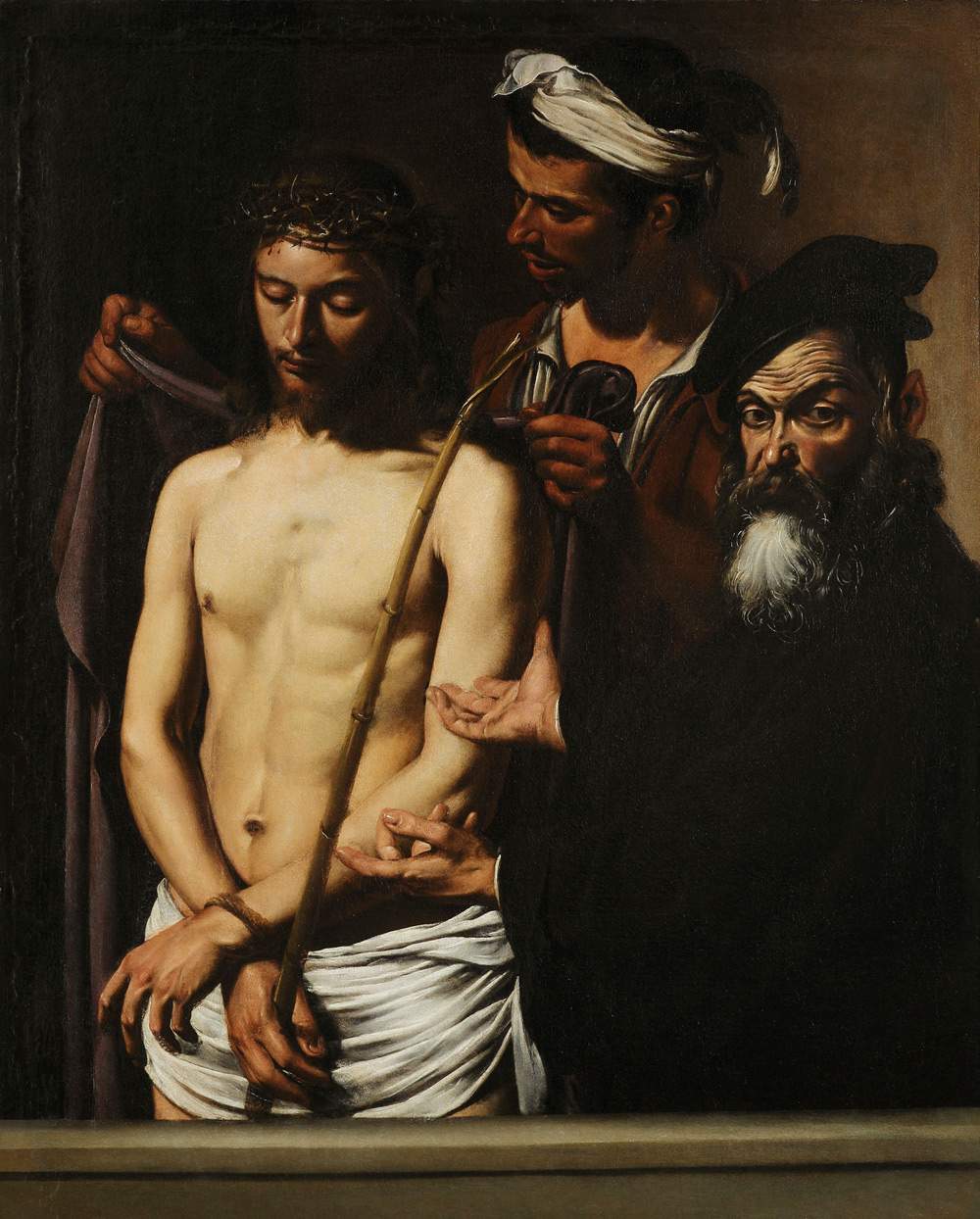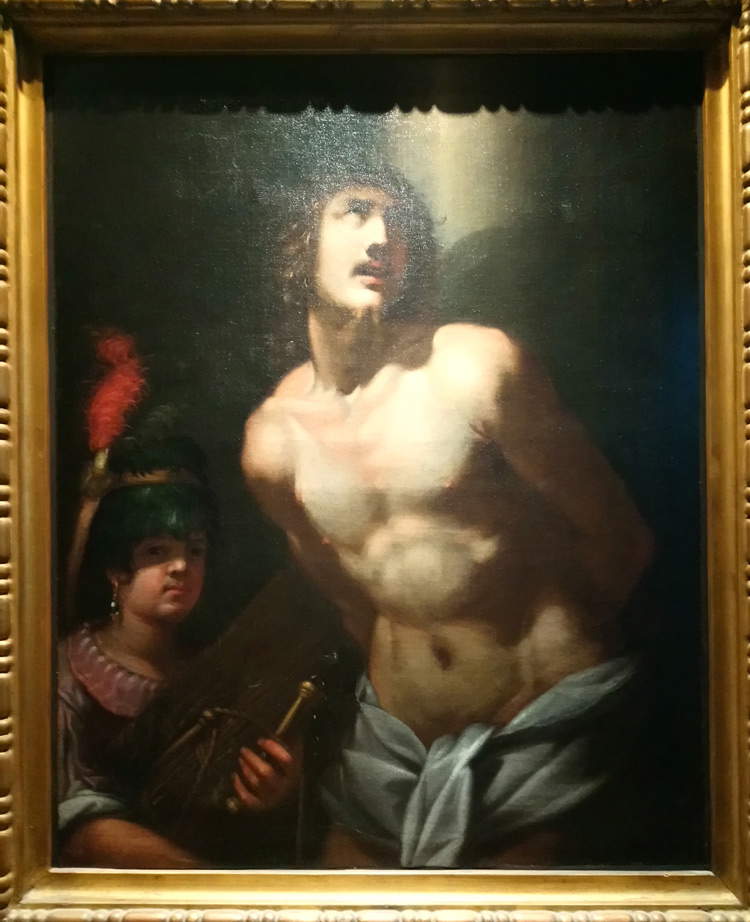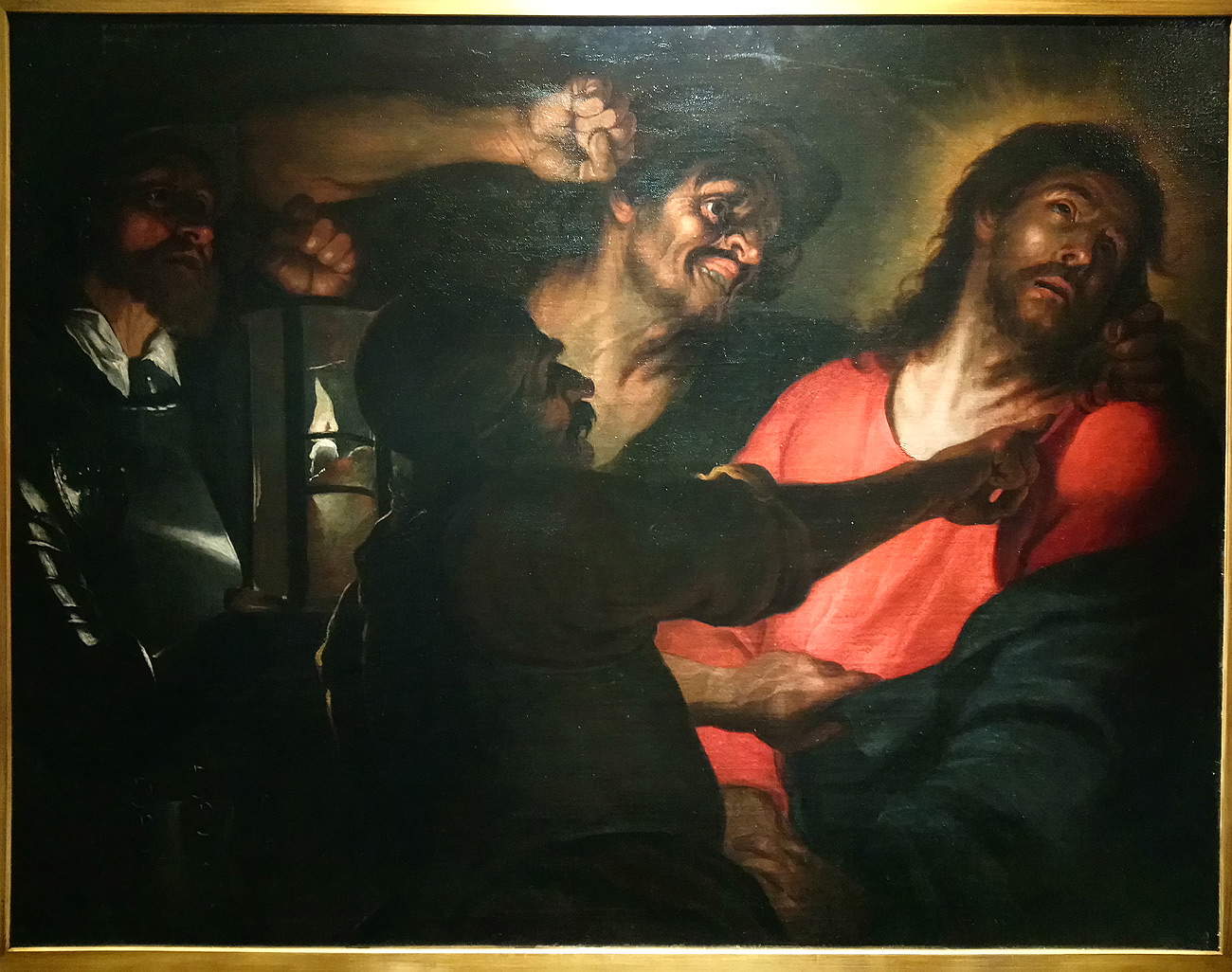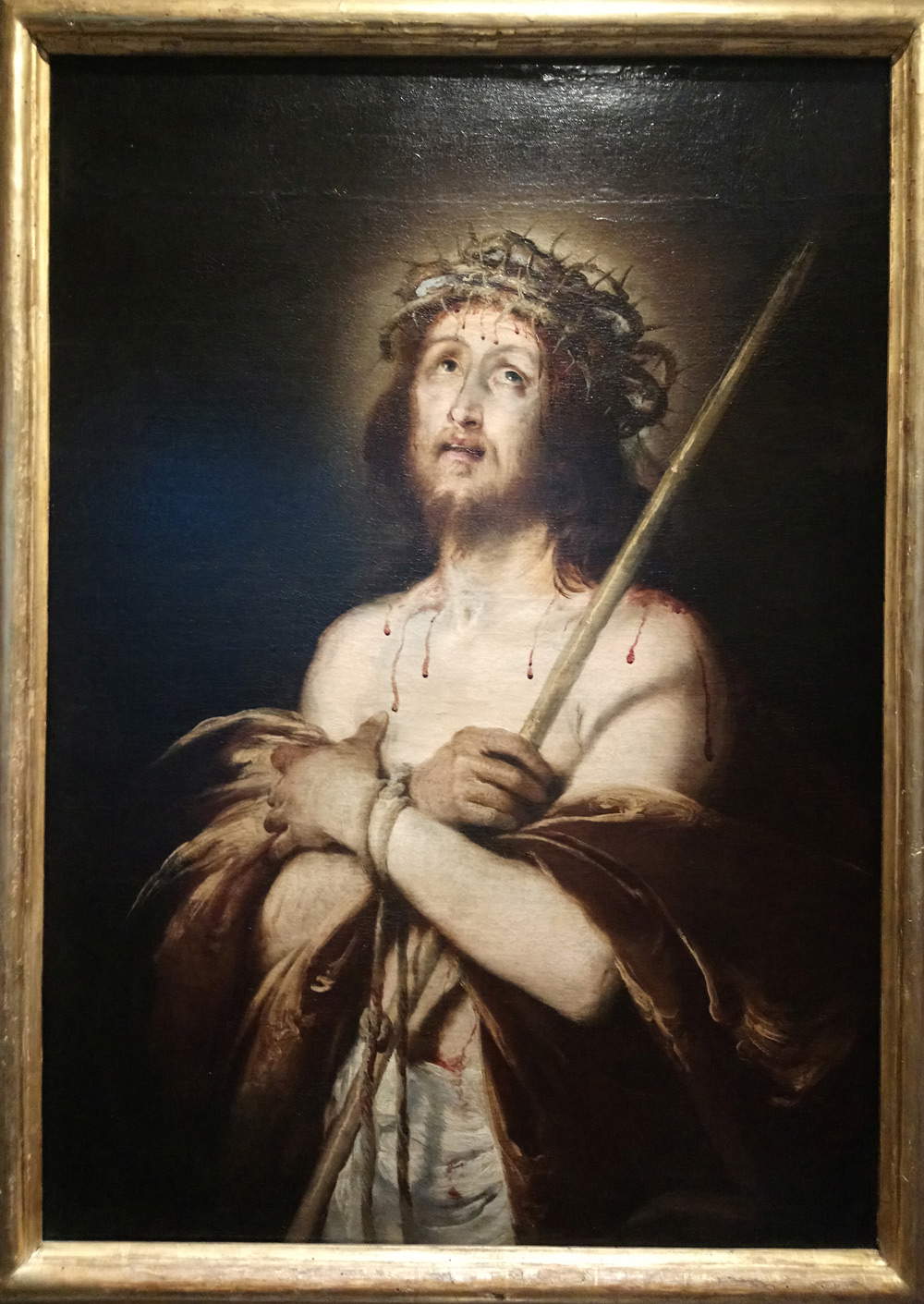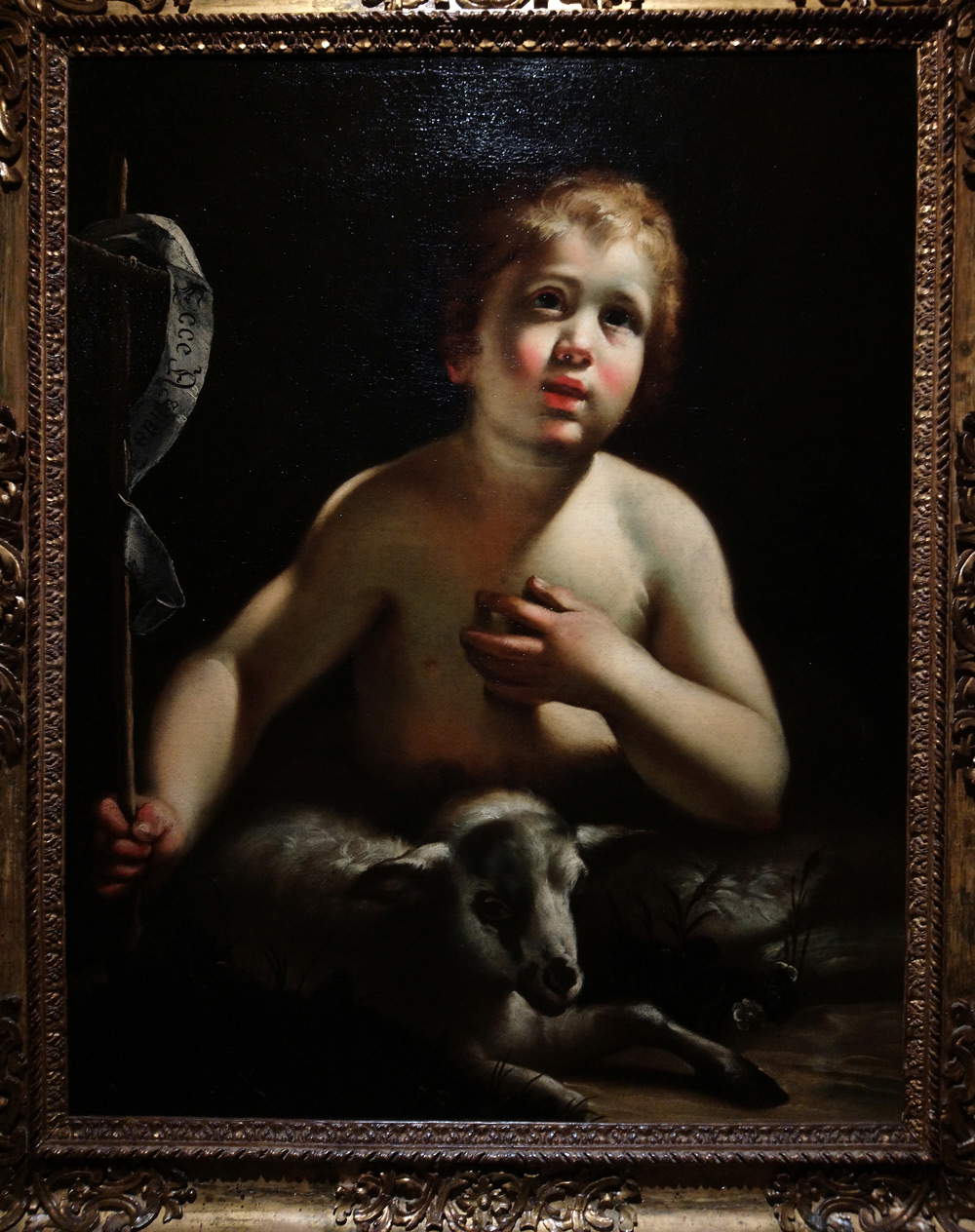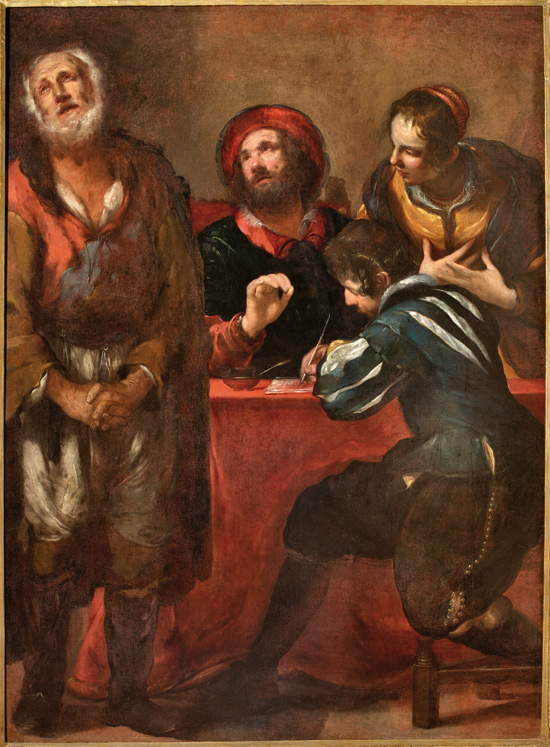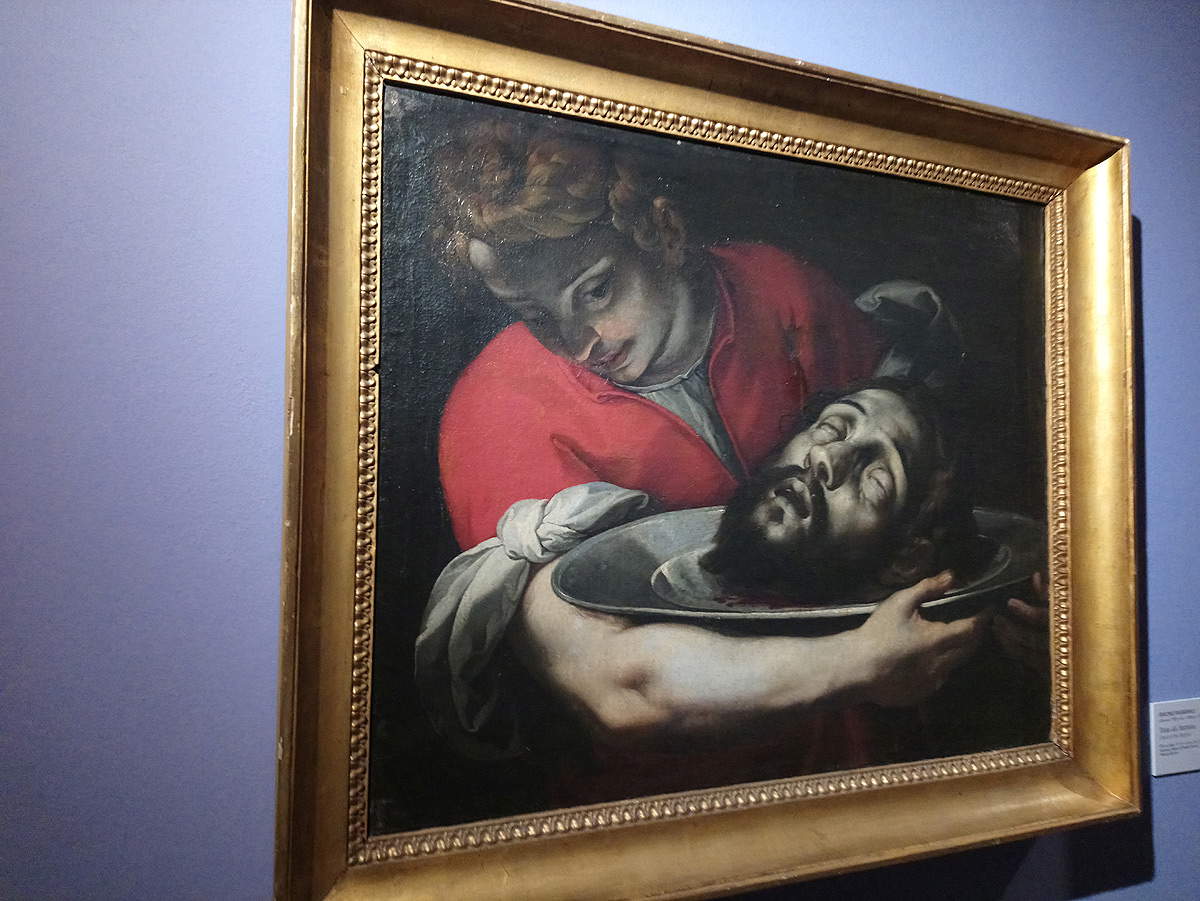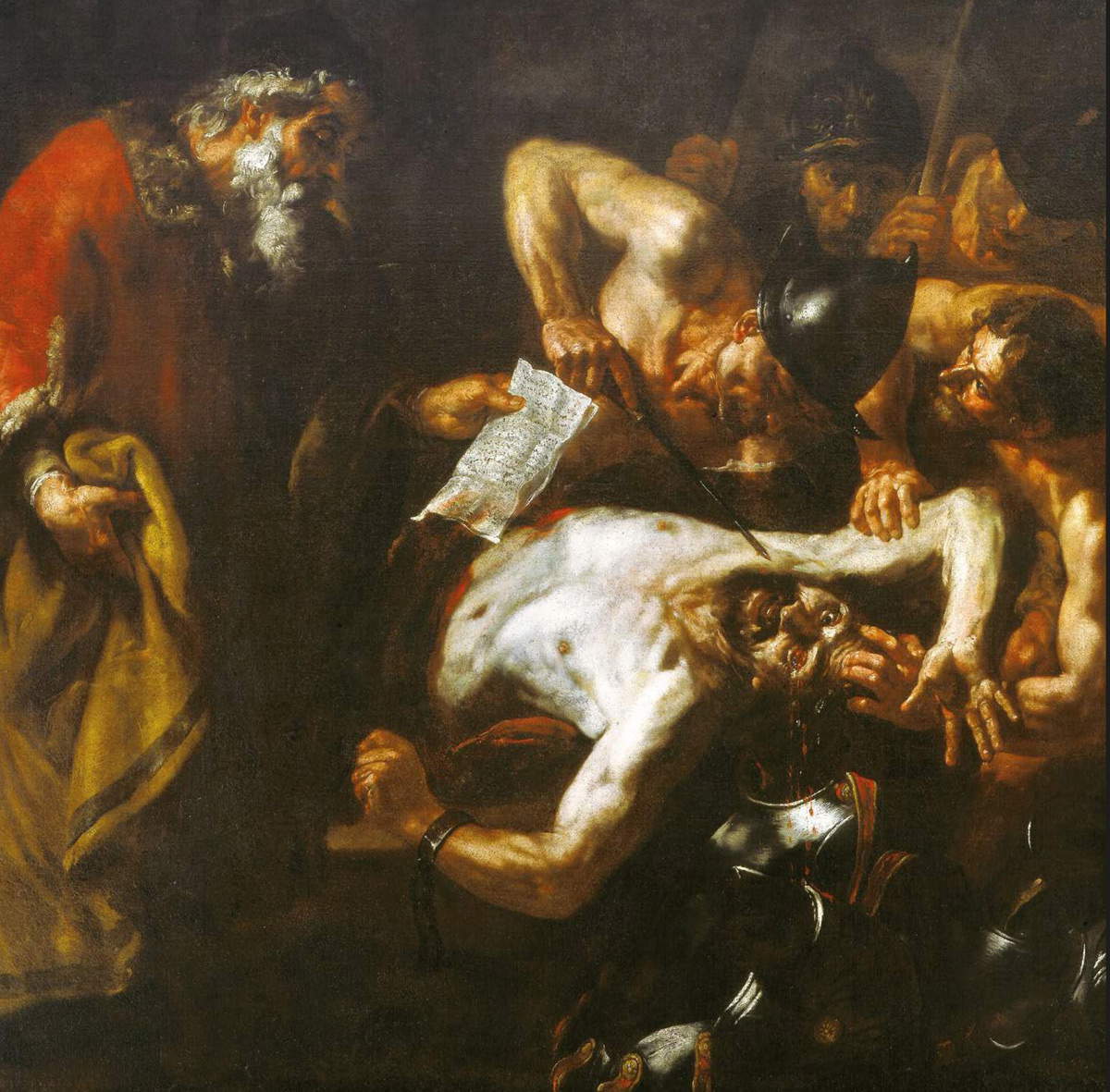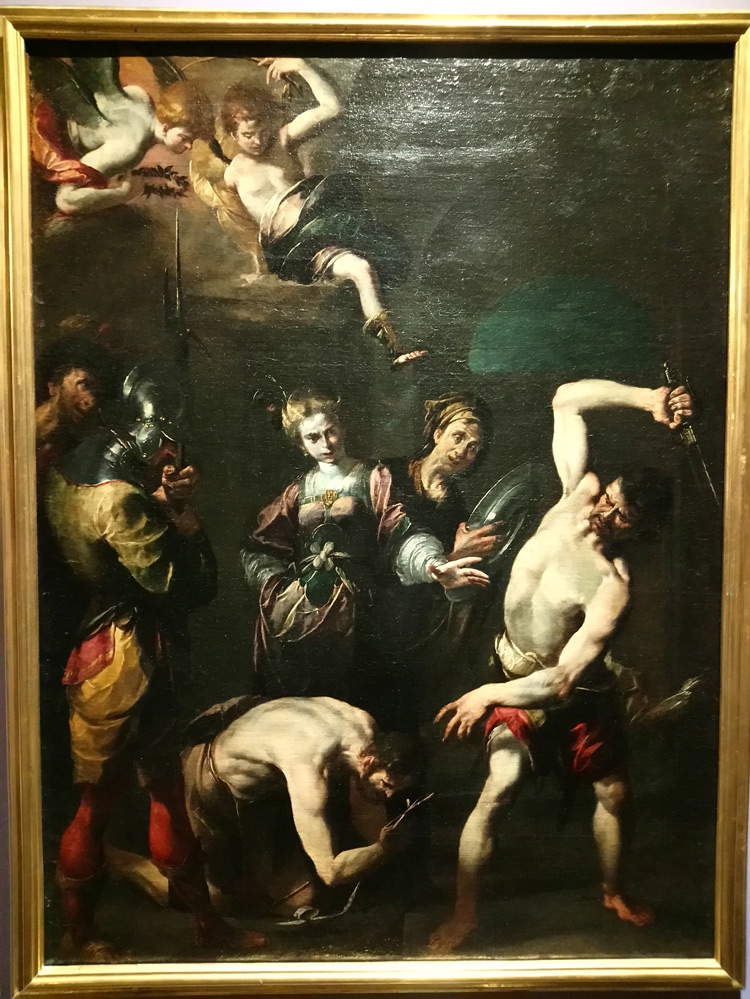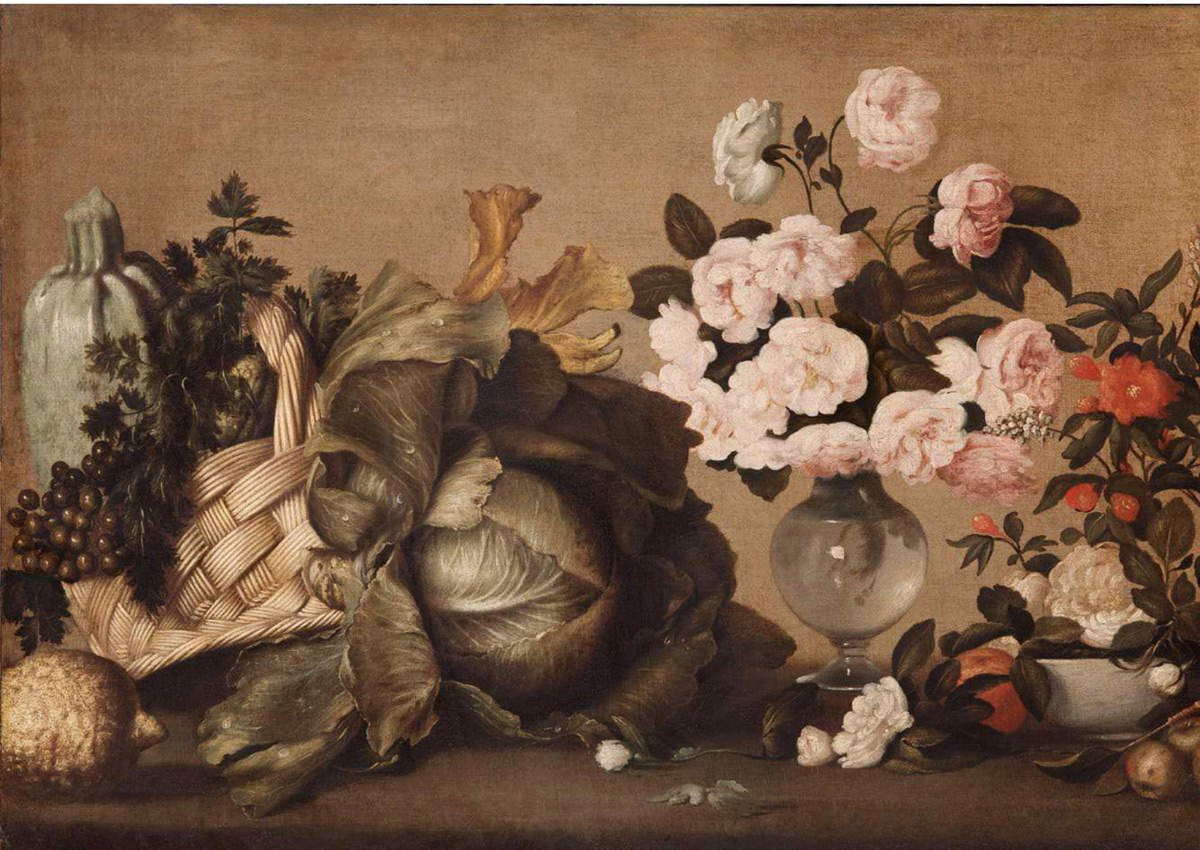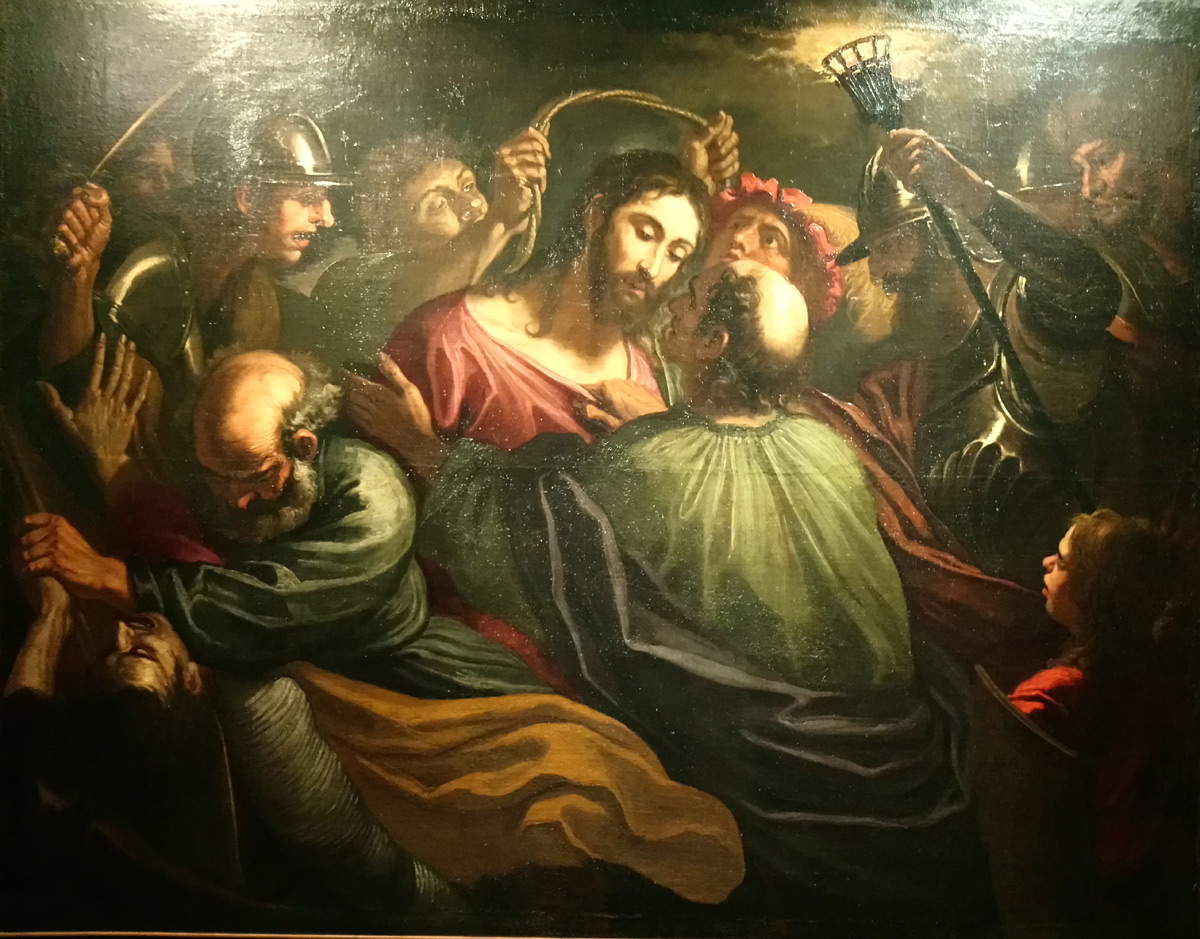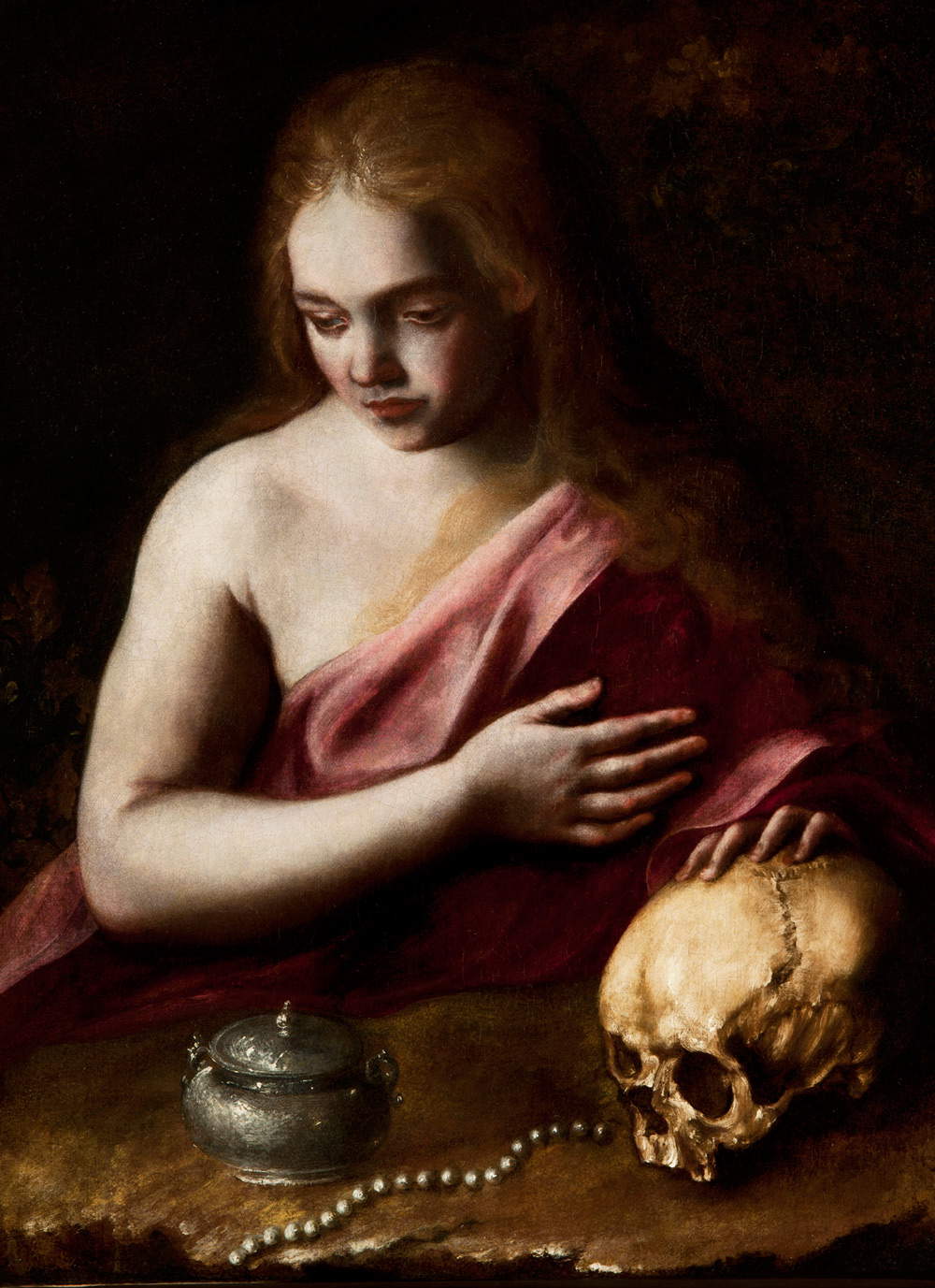by Federico Giannini (Instagram: @federicogiannini1), published on 01/03/2019
Categories: Exhibition reviews
/ Disclaimer
Review of the exhibition "Caravaggio and the Genoese. Patrons, Collectors, Painters," in Genoa, Palazzo della Meridiana, from February 14 to June 24, 2019.
In the past year alone there have been at least a couple of interesting opportunities that, though unrelated, have offered the public and scholars much material to open up an in-depth discussion on the development of Caravaggism in Genoa. In the first case it was the Milanese exhibition L’ultimo Caravaggio: In spite of its high-sounding and contrived title, winking at the appeal that the name of Caravaggio (Michelangelo Merisi, Milan, 1571 - Porto Ercole, 1610) exerts on the public, the exhibition at the Gallerie d’Italia was configured as a proposal of very high scholarly value that, starting from the collecting vicissitudes of Marco Antonio Doria (Genoa, 1572 - 1651) and moved by the assumption that Genoa had at least coldly received Merisi’s lesson, came to the conclusion that the art of the great Lombard, despite having fascinated several Genoese artists, had no way of making a decisive impact on the Ligurian capital. Curator Alessandro Morandotti, in the catalog’s introductory essay, wondered whether it is not possible to imagine a history of seventeenth-century art without Caravaggio, and argued that in several Italian centers, including Genoa, “other traditions press in, other intelligences act, in full autonomy, even when one is forced to come to terms with the works of Caravaggio placed before one’s eyes, perhaps only through a copy believed to be an original.” The second occasion was represented by an exhibition of lesser media impact and lesser scope, but decidedly useful for adding arguments on the subject of Caravaggio’s Genoese legacy, as well as for examining in greater depth the vicissitudes of one of the protagonists of that season, Bartolomeo Cavarozzi (Viterbo, 1587 - Rome, 1625): we are talking about the exhibition at Palazzo Spinola dedicated to Cavarozzi himself and his relations with Genoa. Returning to the first of the two exhibition events, in the review of The Last Caravaggio, the writer speculated that, given the reflections opened by the Milanese exhibition, other contributions on the issue would soon arrive. It is therefore on this basis that we can begin to enter into the merits of Caravaggio and the Genovese. Patrons, Collectors, Painters, the important exhibition at Palazzo della Meridiana that, given its contents, will not fail to cause much discussion.
The exhibition, curated by Anna Orlando, revolves essentially around two main axes: on the one hand, it enters decisively into the debate on the autography of the only work by Caravaggio preserved in the city, theEcce Homo in Palazzo Bianco (which thus temporarily leaves its location to move a few meters), and on the other it reconstructs, with a significant anthology, the developments of the reworking of Merisi’s art in Genoa (rather than those of his fortune), a theme to which, however, other themes of no less importance are connected, such as the relations between artists and patrons, the terms of the presence in Genoa of the early Caravaggesque painters, the vicissitudes of the collecting connected to them, and the diffusion of copies. Arguments, moreover, that are not unconnected: a hypothetical presence in ancient times of Caravaggio’s work in Genoa could open interesting (and in some ways unprecedented) scenarios on the relationship between Caravaggio and the Genoese. However, it is necessary to proceed in order, starting with the long-standing question of theattribution of the Palazzo Bianco work to the hand of Michelangelo Merisi, and it should be emphasized that, in this sense, the Palazzo della Meridiana exhibition aspires to be diriment.
 |
| Images from the exhibition Caravaggio and the Genoese |
 |
| Images from the exhibition Caravaggio andthe Genoese |
 |
| Images from the exhibition Caravaggio andthe Genoese |
The level is very high from the very first bars: accompanying the public to the heart of the exhibition is a masterpiece by Luca Cambiaso (Moneglia, 1527 - San Lorenzo de El Escorial, 1585), Christ before Caiaphas arriving from the Museo dell’Accademia Ligustica, which frames the theme of the possible inspirations that Caravaggio may have drawn from Genoese art of the time (an issue, however, that is not collateral in the overall economy of the exhibition, and of anything but secondary importance). The happy choice to welcome visitors with one of the greatest texts of Cambiaso’s luminism echoes the last rooms of the great monographic exhibition that Palazzo Ducale dedicated to Cambiaso in 2007: at that time, Caravaggio’sEcce Homo was placed at the close to emphasize the fact that a possible relationship between Cambiaso and Caravaggio (which would obviously have been consummated at a distance, since the two did not have the opportunity to meet in person), mediated by Vincenzo Giustiniani’s collecting, might be entirely plausible. Among the curators of the 2007 event was Lauro Magnani, who, for the catalog of Caravaggio and the Genovese, wrote a pregnant essay on Genovese “lumistic insights,” also considered in relation to a possible legacy collected by Michelangelo Merisi. It is a complex (but also very fascinating) subject, and one on which many different points of view have been historically recorded: for Magnani, Cambiaso’s light manifests “mental and transcendental accentuations” that stand in a continuous line with respect to manner painting, rather than connecting “with the investigation of the natural and with Caravaggio’s more innovative luministic mode, faithful however to an objective datum,” and therefore distant from Cambiaso’s supernatural lights. This does not detract from the fact that such aspects are “present, enriched by a frank naturalism, in Nordic Caravaggism,” led by the experiments of Gerrit van Honthorst, a painter who had in the Genoese Vincenzo Giustiniani (Chios, 1564 Rome, 1637), among Caravaggio’s most famous patrons, a passionate supporter.
Leaving the room in which Christ before Caiaphas towers alone, one immediately finds oneself beforeEcce Homo, and at this point it is necessary to summarize in brief lines the historical and attributive events of the painting, since they are central to the overall discourse of the review. A meticulous reconstruction is offered in the catalog by Raffaella Besta and Margherita Priarone: the work was found in 1953, in the deposits of Palazzo Rosso, thanks to Caterina Marcenaro, then director of the Office of Fine Arts of the City of Genoa, and was heavily damaged by the bombing of World War II. Ancient sources are silent aboutEcce Homo, at least as far as we know, but it certainly must have been a painting that enjoyed a certain fortune, since copies were made of it. It is known that theEcce Homo entered Palazzo Bianco in 1929 and was catalogued as a “copy by Lionello Spada,” given its poor state of preservation, which compromised its full or proper legibility. The object of a decisive restoration, conducted in 1953 by Pico Cellini, the work was attributed to the hand of Caravaggio by Marcenaro and Roberto Longhi: this was the beginning of a discussion that has continued to this day. The doubts revolve above all around the absence of historical information aboutEcce Homo, which we must nevertheless imagine to have been present in Sicily at some point in its existence (a detail of no small importance for a possible reconstruction of its ancient history, as will be seen shortly), given the quantity of copies of the painting produced on the island. In favor of the attribution to Caravaggio over the years have been Mia Cinotti (1983), Mina Gregori (1985), Maurizio Calvesi (1990), Maurizio Marini (2005), John T. Spike (2010), Besta and Priarone themselves (2016), and Piero Boccardo (2018). Against the attribution wrote Francesca Cappelletti in 2009 (who pointed out the “sharp physiognomies rather unusual for the Roman Caravaggio, [...] treated with thick blacks and with harsh, insistent, almost charcoal-like lines” and recalled how the critical history of the painting was recent), Sebastian Schütze also in 2009 and then again in 2015 (for the German art historian the composition is suffocating and fragmented, so much so that Pilate, whose features are moreover judged exaggerated and almost caricatured, seems to him to be untied from the other figures, as if he had been placed in the abyss), Keith Christiansen in the 1980s, with even recent reprise in a post on Instagram (the U.S. scholar shares his perplexities about the bizarre figures, different from Caravaggio’s typical, more serious ones, and expresses reservations about the denser-than-normal brushstrokes and certain unusual details, such as the shape of the ears), and finally Yuri Primarosa in 2016, who does not detect a quality equal to that of other safe Caravaggio works and therefore prefers to assignEcce Homo to one of his followers.
It is necessary to point out how critics have expressed themselves almost exclusively on stylistic grounds: instead, Anna Orlando preferred to remind that the game is played "not only on the field of connoisseurship," but also on that of technical analysis, also by virtue of the fact that the conservation history ofEcce Homo is decidedly troubled. It is for this reason that, in his essay, he wanted to recall Cristina Bonavera ’s 2003 restoration, carried out on the occasion of an exhibition held in Berlin and curated by Roberto Contini, and to the results of which insufficient attention was paid. According to Orlando, there would be several revealing clues to Caravaggio’s hand, if one examines the x-rays, reflectographs and the considerable amount of material produced on that occasion: “elements pertinent” to Caravaggio’s technique of execution can be traced in the work, writes anna Orlando, referring to details such as the various repentances that, conversely, would have been absent if we were in the presence of a copyist (one of the most obvious is that of the shoulder of Jesus), the presence of incisions, and the trace of a zig-zag brushstroke typical of the Lombard master. These are all elements found by analyzing many other paintings by Michelangelo Merisi, with the result that especially the engravings and the zig-zag sketch seem to the curator to “close the circle of a long examination in support of the full autography of the Genoese painting.” ButEcce Homo would also be relevant with respect to a possible Genoese context: Orlando’s hypothesis (which goes back to an article by Gianni Papi in 1990), is that the work was executed in Sicily in 1609 (a date already adduced by others and followed for stylistic reasons), the year in which the bishop of Palermo was the Genoese Giannettino Doria. Perhaps, in the curator’s opinion, it was precisely the Genoese prelate who may have been the go-between between Sicily and Genoa: difficult to establish with certainty in the absence of papers, but the interesting cue will merit further study (on the other hand, it seems less probable and rather bold, considering the religious mentality of the time, to find references to Andrea Doria in the figure of Pilate).
 |
| Luca Cambiaso, Christ before Caiaphas (c. 1570-1575; oil on canvas, 188 x 138 cm; Genoa, Museo dellAccademia Ligustica di Belle Arti) |
 |
| Caravaggio, Ecce Homo (c. 1605-1610; oil on canvas, 128 x 103 cm; Genoa, Musei di Strada Nuova - Palazzo Bianco) |
In the same room that houses theEcce Homo, paintings of similar subject matter have been arranged that begin the journey into the meanderings of Genoese Caravaggism: certainly, as the curator herself reminds us in the introduction to the essay, some works have been selected by virtue of “the mutual cross-reference of pure visual suggestion,” but there are texts that reveal a certain similarity, such that the hypothesis that their authors might, perhaps, have known Caravaggio’sEcce Homo cannot be ruled out. Of particular note is a canvas by Orazio De Ferrari (Voltri, 1606 - Genoa, 1657), which, with a mirror-image approach to that of the Milanese painter, would seem to take up several of its elements, beginning with Christ looking downward, an element that distinguishes Caravaggio’sEcce Homo from many other contemporary paintings with the same subject, and in which Jesus raises his eyes to the sky to seek comfort but also to emphasize his divine nature: in Caravaggio’s painting, by contrast, the intent is to exalt the messiah’s humanity. Other details (Pilate’s position, his gesture, the presence of a balustrade or other architectural element, the henchman caught in the act of covering Jesus, his hands tied in front of his belly with a cord) would also seem to refer to Caravaggio’s prototype (which, in turn, includes clear Titian suggestions, starting with the meditative dimension that the painter gives to the episode). If, in the exhibition, De Ferrari’s work seems to be the one that most overtly refers to Caravaggio’s painting, the iconographic theme is nonetheless quite useful for beginning to trace the lines of the reception of Caravaggio’s lesson in the city. Acting as a “pathfinder” is Christ at the Column by Giovanni Battista Paggi (Genoa, 1554 - 1627), a work insensitive to Caravaggio’s innovations and still inserted in that Counter-Reformation climate to which Simone Barabino ’s Christ Crowned with Thorns (Genoa, 1585 - 1660), another artist trained in Mannerist circles but who manifested some intention to bring himself up to date, without, however, going as far as the excesses of others such as Giovanni Domenico Cappellino (Genoa, 1580 - 1651), a pupil of Paggi, and whose Christ Mocked comes almost to the point of the grotesque.
The coordinates thus quickly summarized are useful in framing one of the main figures of early 17th-century Genoa, to whom the exhibition grants much prominence: Bernardo Strozzi (Genoa, 1581 - Venice, 1641), who had already been among the protagonists of The Last Caravaggio. The Palazzo della Meridiana review re-proposes the parallel between the painter-priest’s Martyrdom of St. Ursula and Caravaggio’s painting of a similar subject (this is his last known painting, and it is the one that gave the title to the Gallerie d’Italia exhibition: in Genoa, however, the comparison is conducted in absentia, although a reproduction comes to the rescue), reaching conclusions similar to those of last year’s event, but placing possible points of tangency between the two artists in a different light. Morandotti wrote that Strozzi, with his “galliard impasti” and with his “taste for precious and iridescent colors” had completely misrepresented “the dry, almost rough style and the dramatic play of light and shadow of the last Caravaggio,” and that the despair of the Caravaggesque saint becomes “ecstatic and dreamy abandon” in the Strozzi one. Orlando agrees with Morandotti in emphasizing the autonomy of the Capuchin’s Saint Ursula from Merisi’s much more dramatic and much less theatrical Saint Ursula: yet here it is emphasized how the work, formerly in the collections of Marco Antonio Doria, may have been a source of inspiration for him, especially in terms of the relationships between light and shadow that, for the curator, “reverberate in Strozzi more at the formal level than anything else” (it is worth remembering that Caravaggio’s painting and Strozzi’s pursued different aims, and that moreover the Genoese was a religious man: the importance he accorded to the “mystical” datum was therefore fundamental).
Therefore, rather than influence (a term that, if we want to comply with Baxandall’s prescriptions, should be avoided as much as possible), it would make sense to speak of a “free inspiration from,” also taking into account Bernardo Strozzi’s culture, the works he may have seen(The Last Caravaggio placed him in open dialogue between Caravaggio, Rubens and Procaccini) and of the environment in which he was formed and which corresponds to the one presented in the first part of the room, so much so that the paintings by Paggi and Barabino are juxtaposed with the famous Ecce Homo from Palazzo Spinola, moreover recognized as a work by Strozzi by Anna Orlando herself some years ago, and a painting for which similar considerations apply as for the Saint Ursula. There is also room in the room to introduce the topic of copies from Caravaggio (of extreme relevance, since copies help to reconstruct the vicissitudes of the originals, the critical fortune of a master, the histories of collectors, the consideration an artist enjoyed in the past), with the presence of theCoronation of Thorns taken in all likelihood from the Caravaggesque original (a work that, however, has a complex attributive history, as we recalled at the time of its exhibition for the major exhibition at the Palazzo Reale in Milan between 2017 and 2018), and coming from the Oratory of St. John the Baptist in Rivarolo: on the occasion of the exhibition, the attribution of the painting to Cesare Corte (Genoa, 1550-after 1619), an excellent copyist and a painter with a very troubled biographical story, is formulated. The hypothesis rests not only on stylistic grounds, but also on the fact that the collector Orazio Di Negro owned a copy of theCoronation made by Corte, and that the Di Negro family had supported the church of San Bartolomeo della Certosa (adjacent to the oratory) with substantial donations: it is therefore possible that, at some point in time, the work exhibited at Palazzo della Meridiana left the Di Negro collections to make its entry into the house of worship.
 |
| Orazio De Ferrari, Ecce Homo (c. 1640; oil on canvas, 118 x 97 cm; Genoa, Collezioni darte di Banca Carige) |
 |
| Giovanni Battista Paggi, Christ at the Column (1607; oil on canvas, 106 x 85 cm; Milan, Koelliker Collection) |
 |
| Giovanni Domenico Cappellino, Christ Mocked (c. 1605-1610; oil on canvas, 128 x 103 cm; Genoa, Musei di Strada Nuova, Palazzo Bianco) |
 |
| Bernardo Strozzi, The Martyrdom of SantOrsola (1620-1625; oil on canvas, 104 x 130 cm; Milan, Koelliker Collection) |
 |
| Bernardo Strozzi, Ecce Homo (1620-22; oil on canvas, 105 x 75 cm; Genoa, Galleria Nazionale di Palazzo Spinola) |
Mention has been made of Bernardo Strozzi’s approach to Caravaggesque luminism: it is precisely the “theater of light” that is the great protagonist of the next section of the exhibition, which aims to present, with a summary selection, the main players in Genoese Caravaggism. It should be borne in mind that, over the years, the dominant taste in the city took a totally opposite direction to Caravaggesque gloom and accorded preference to the triumphant Baroque of Domenico Piola, Valerio Castello, Carlone and others who had little or nothing to do with the suggestions that came from Rome, but it is also true that Genoa was an important crossroads of Caravaggism: not only did Caravaggio himself pass through here, but also some of his closest followers, from Orazio Gentileschi to Bartolomeo Cavarozzi, from Battistello Caracciolo to Simon Vouet, not to mention that almost all the Caravaggesque painters were well represented in the collections of the great Ligurian patrons. The problem that the exhibition therefore poses is to understand who and how much had adhered to the novelties that were arriving from outside the region. The leading role of Bernardo Strozzi is reaffirmed by the presence in the room of a couple of his works that show a more stringent closeness to Caravaggio, to whom the Genoese painter approaches in theuse of light sources to intensify the pathos expressed by the characters, as occurs in the unpublished San Giovannino from a private collection, which is also striking for the realistic nature of the lamb whose fleece is rendered with such naturalism as to stimulate tactile impressions in the subject. The other great protagonist of the early 17th century in Liguria is Domenico Fiasella from Sarzana (Sarzana, 1589 - Genoa, 1669), who is present in the exhibition with a Judith and Holofernes that offers a subject among the most frequent in painting of the time: Fiasella had been a pupil of Paggi and, before that, of one of the best-known Tuscan Mannerists, Aurelio Lomi, artists from whom he derived a marked sense of elegance that always permeates his compositions and characters, and at the age of eighteen, in 1607, he had moved to Rome, where he became acquainted with Orazio Gentileschi and had the opportunity to observe closely the most relevant Caravaggesque texts. Fiasella’s encounter with Caravaggism was resolved precisely within the terms of a very close proximity to Gentileschi’s father, from whom the sarzanese artist took patterns, elements, and atmospheres: Judith is no exception, since it succeeds in diluting the ferocity of Caravaggio’s painting of the same subject (and at the time in the possession of a Ligurian collector, the banker Ottavio Costa, whose history is reconstructed in the catalog in a dense essay by Giacomo Montanari) by framing it within that Tuscan sophistication that constituted the most evident feature of Orazio’s Caravaggism, and which likewise is not alien to Fiasella (his Judith, though in the gritty resolve of her expression, is a gentlewoman who, in order to kill the Assyrian general, did not even take off her pearl necklace, and her handmaiden is not Caravaggio’s griffinous old woman, nor the energetic helper of Artemisia Gentileschi, who blocks Holofernes with all her strength: she looks at most like a peer friend, at once doubtful and dismayed).
If Fiasella is the most refined of the Genoese painters on whom the Caravaggesque ascendancy holds sway, Luciano Borzone (Genoa, 1590 - 1645) is probably the most lyrical and emotional: Back on public display, after the important monographic exhibition at Palazzo Nicolosio-Lomellini in 2015-2016, is the Negation of St. Peter from a private collection, which, as we have already pointed out on these pages, combines a naturalist flair that frees itself as much from Caravaggio’s drama as from Gentilesque nitori (the Negation of St. Peter is rendered almost as if it were a genre scene) with an intense poetic vein that opens up the possibility of considering Borzone’s a "caravaggismo sui generis,“ according to the formula used by Anna Orlando. A Caravaggismo founded (in this and also in other cases, typical of the artist’s mature production) on ”brushstrokes that are at times mellow and skillful in conferring a good plastic prominence“ that alternate with ”other more liquid and slender ones that break the contours and dissolve in modulated highlights, capable of describing not only the physicality of the anatomies, but above all the affections of the soul," with the result that Negation is a “pictorial text of very special communicative force and great emotional involvement” (thus, in the catalog of the aforementioned monograph on Borzone, curator Anna Manzitti described the painting). The journey through the room continues with far more heinous texts, such as Simone Barabino’s Head of the Baptist, which of his works is among those that mark the closest to Caravaggesque instances, or such as the extremely violent Law of Zaleucus (the protagonist is the legislator who, in Magna Graecia in the seventh century B.C, had a law promulgated that provided for the blinding of those guilty of adultery) by Orazio De Ferrari, who for this and other brutal paintings drew cues from coeval Neapolitan painting, that which interpreted the lesson of Michelangelo Merisi in the darkest terms, or again like the Beheading of the Baptist by Gioacchino Assereto (Genoa, 1600 - 1650), another among the greatest Ligurian Caravaggesque painters: Given his age (he was of the generation following that of Strozzi, Fiasella and Borzone: the latter, moreover, was his teacher) was probably the first Genoese to fully immerse himself in the confines of a naturalism often pushed to its most extreme consequences (as was usually the case with De Ferrari’s strictest Caravaggesque observance) and which, Anna Orlando points out, hinges on a “sense of atmosphere in which the light is no longer the sharp light of Caravaggio and close followers, nor the artificial light of the much-admired foreigners Gherardo delle Notti and Matthias Stom, but is that drawn from a more ’natural’ reality.” The presence in this room of an absolute champion of Baroque decoration such as Giovanni Battista Carlone (Genoa, c. 1603 - Parodi Ligure, c. 1684) might seem surprising: his Sacrifice of Isaac informs us that Carlone’s research was not, however, free from naturalist impulses, for which the study of the Caravaggesque painters was significant.
The growing importance, after Caravaggio, of the genre of still life and the female protagonists in the episodes narrated by the artists is underscored in the penultimate room: exceptional is Natura morta con vaso di peonie rosa (Still Life with a Vase of Pink Peonies), another unpublished work assigned to Bernardo Strozzi, who takes up the “challenge of the real” launched by Caravaggio with a composition where passages of verismo coexist harmoniously with a Tuscan colorism that makes the flowers arranged by the Genoese priest in the vase placed next to the basket of vegetables appear shiny. Giovanni Battista Merano ’s Judith (Genoa, 1632 - Piacenza, 1698) opens to the last room, which presents the public with the Caravaggesque flamboyance of the late 17th century, whose protagonists were a number of painters who made a conscious recovery of Caravaggesque modes: it begins with Merano himself, whose unpublished Capture of Christ introduces his unique interpretation of Caravaggesque tenebrism, grafted onto theatricality (see, for example, the gesture of the henchman about to tighten a rope around Jesus’ neck) and crowding typical of late Baroque compositions. It then continues with two artists active at the end of the century such as Pietro Paolo Raggi (Genoa, 1646 - Bergamo, 1724) and Giovanni Lorenzo Bertolotto (Genoa, 1640 - 1721), painters who moved in the wake of a sort of mannerist Caravaggism, but not without interesting insight (Bertolotto’s Finding of Moses stands out for its naturalism and the skillful and balanced composition), and concludes with Bartolomeo Guidobono (Savona, 1654 - Turin, 1709) from Savona. The latter’s tenderly adolescent-looking Magdalene, with its reflection on the vanities of the earthly world that takes on poignant accents of intimacy, brings us back to the melancholy character that connoted Caravaggio’sEcce Homo.
 |
| Bernardo Strozzi, San Giovannino (c. 1620-1625; oil on canvas, 78 x 61 cm; Private collection) |
 |
| Domenico Fiasella, Judith and Holofernes (c. 1620-1630; oil on canvas, 150 x 200 cm; Reggio Emilia, Private Collection) |
 |
| Luciano Borzone, Denial of St. Peter (c. 1635; oil on canvas, 188 x 136 cm; Zerbone Collection) |
 |
| Simone Barabino, Head of the Baptist (c. 1615-1620; oil on canvas, 63.5 x 77 cm; Genoa, Musei di Strada Nuova, Palazzo Bianco) |
 |
| Orazio De Ferrari, The Law of Zaleucus (c. 1640-1650; oil on canvas, 189 x 187 cm; Private collection) |
 |
| Gioacchino Assereto, Beheading of the Baptist (c. 1623-1626; oil on canvas, 78 x 58 cm; Private collection) |
 |
| Bernardo Strozzi, Still Life with Vase of Pink Peonies (c. 1635-1644; oil on canvas, 65 x 92.5 cm; Milan, Poletti Collection) |
 |
| Giovanni Battista Merano, Capture of Christ (c. 1655-1665; oil on canvas, 157 x 200 cm; Private Collection) |
 |
| Bartolomeo Guidobono, Magdalene (c. 1670-1675; oil on canvas, 80 x 58 cm; Private Collection) |
In these terms, with a reminder of the beginning of the review, the curator wanted to close an itinerary that bears all the typical characteristics of her exhibitions: great clarity of exposition (to her activity as an art historian, Anna Orlando also flanks a constant and fruitful commitment in the field of popularization), high attention to the heritage kept in private collections (from which most of the works on display come), a continuous and linear narrative thread from the first to the last room. We can foresee that the discussion that will inevitably be ignited in the wake of the conclusions the exhibition reaches aboutEcce Homo (and not only with respect to considerations about autography, but also to those about possible commissioning, and thus about its early history) will be beyond interesting: one wonders, in particular, whether Caravaggio and the Genoese will succeed in extinguishing resistance against a widely accepted autograph, and whether the reflections introduced by the exhibition will be considered decisive even by those who had already advanced an attribution to Caravaggio on stylistic grounds. In short, in Genoa the public has the opportunity to visit an exhibition that offers significant advances in our knowledge of the art of the period: the new conclusions onEcce Homo, the hypotheses about its history and that of other paintings (theCoronation of Rivarolo has been mentioned in this contribution), and the various unpublished works (as many as four out of a total of thirty-two works) offer research a considerable amount of material on which to continue its studies. This is, after all, the highest goal to which any exhibition should aspire.
Accompanying the exhibition is a rich catalog that, while not counting on the fact sheets of individual works (in their place, a registry with technical data and bibliographies), compensates with fifteen essays of the highest quality, divided into three sections (the contributions around Caravaggio’sEcce Homo and the contexts that preceded and followed it, those on the Genoese patrons of the Milanese painter, and those on the non-Genoese Caravaggesque painters who transited the city in various ways and in various capacities) and closed by a long and rich analysis on Caravaggism in Genoa, identified in the end as an extremely complex phenomenon characterized by a continuous alternation of styles, which often varied from painter to painter, and for which the chronologically non-discriminating character of the Caravaggesque element is emphasized, which, as it turned out, was capable of returning even decades later. Finally, a further confirmation for Palazzo della Meridiana, which continues to offer exhibitions of certain interest, such as those that are foreseen in the next two years: in 2020, an exhibition on the faces of the siglo de los Genoveses from Cambiaso to Magnasco, and in 2021 an appointment with a review that will delve into the relationship between Rubens and Genoa.
Warning: the translation into English of the original Italian article was created using automatic tools.
We undertake to review all articles, but we do not guarantee the total absence of inaccuracies in the translation due to the program. You can
find the original by clicking on the ITA button. If you find any mistake,please contact us.




